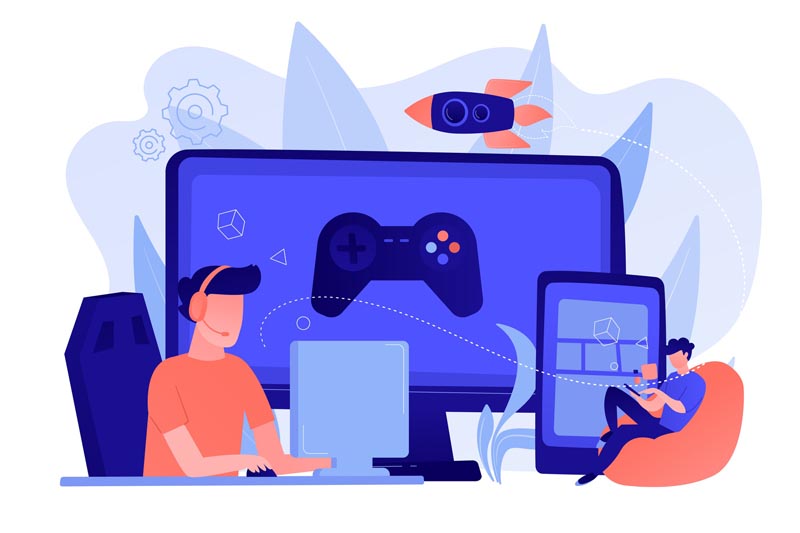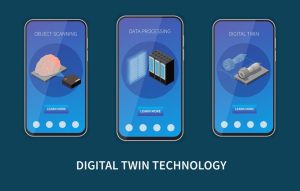Games are now an important part of our lives. The gaming business has changed quickly from play stations to games in the cloud. The rise of cloud computing and the race to 5G have made it possible for gaming engineers to roll out cloud-based gaming.
The market is growing because more people are getting high-speed internet, buying smart devices, using gaming as a service, and the entertainment industry is becoming more digital. India is one of the most popular places for cloud gaming because the Indian gaming industry is quickly moving to the cloud.
India’s young people are likelier to be on their phones than at their desks. These high-level games can’t be played on cell phones because they don’t have enough processing power. Cloud gaming has enabled it to run these games and stream live video to mobile devices in real-time. Since cloud gaming lets you play right away, it is called on-demand gaming.
Gaming as a Service (GaaS)
It backs the model of free-to-play. In other words, it makes money not by selling cloud games but by providing a service for playing games. The idea behind cloud GaaS is that online games will always be updated, and players can access them from anywhere. It is a web-based system that regularly asks gamers for feedback.
The games are updated often so that the people who play them can feel at home. Like Netflix, cloud gaming lets you play high-end, blockbuster video games anytime, anywhere, and on any device. So, people also call cloud gaming the Netflix of gaming. Cloud gaming is a mix of client architecture and a server in the cloud that stores, hosts, renders, and runs the game.
Fundamental Elements of a Cloud-Based Gaming System:
- 3-D Graphics Streaming: The graphics commands are sent from the cloud server to the client server. The client-server reads the commands and makes the scene look the way it should.
- Video Streaming: In streaming video, the 3D commands are turned into 2D by the server. After the conversion, the video stream is sent to the client.
- Video Streaming to Post-Rendering Operations: This system is between the other two. The server does most of the work of rendering the 3D graphics. Thin Client is used to working on the client machine that doesn’t use much processing power.
Cloud Gaming Framework:
The following are parts of the cloud gaming framework:
- Thin Client Interaction: This subsystem delivers all client commands and turns messages sent over the network into actions that can be used in the game.
- Game Logic: The game logic module determines the game’s actions.
- Video Renderer: This module draws all the scenes sent by the game logic.
- Video Encoder: The scenes are compressed by the video encoder, which is then sent by video streaming.
- Video Decoder: This module continues to play the video broadcasted by the server in reply to the player’s actions.
Every scene in a game is done one time through the framework by following a set of steps. After the player chooses a game and starts it, each scene goes through the following steps:
- Using a controller, the player tells the computer what to do during a game. The receiver records these events and sends them to the server.
- The game logic changes the game world based on the game commands it gets from the server.
- Every change the game logic makes will be a gaming scene.
- The video encoder will use the gaming scene made as input to compress and encode it.
- The encrypted game scene was sent to the client machine over the internet.
- The game scene is broken down by the thin client’s video decoder and shown on the gamer’s screen.
Benefits of Cloud Gaming
- Security: The information about users is kept on a virtual server by cloud gaming systems. This lets you do safe calculations and keeps hackers away.
- Device Compatible: The cloud platform is scalable so gamers can play high-end games on lower-end machines. It gives users a better gaming experience by requiring less memory and having better graphics and processing power.
- Costs are lower because the “pay as you go” payment method is used in the cloud gaming model. In contrast to the traditional model, game companies pay for resources they already use. Also, the hardware cost has decreased because all the calculations are done on the server.
- Cloud gaming makes it easy to play games anywhere and anytime without installing or downloading them. The user has to sign in to his account and then start playing.
- No Piracy: The absence of physical gaming software on the market has made it less likely that someone will steal it. Cloud makes it less likely that someone can change or stop the game without permission. This keeps the game interesting.
- Support for multiple devices: Cloud computing works with many devices, from desktop computers to tablets. Gamers don’t have to use just one console anymore. We can play games anywhere with the hand-held devices we use every day.
- Access to More Than One Game: The cloud lets gamers play more than one game simultaneously. So, the companies can make more money, and the players can have a better time.
Conclusion
“Gaming as a Service” is becoming increasingly popular in the gaming industry. The cloud gaming framework has enabled complex game scenes to be calculated smoothly. It has given gamers a great time playing games and helped companies make more money. Soon, cloud gaming will shake up the hardware business by providing various benefits.



